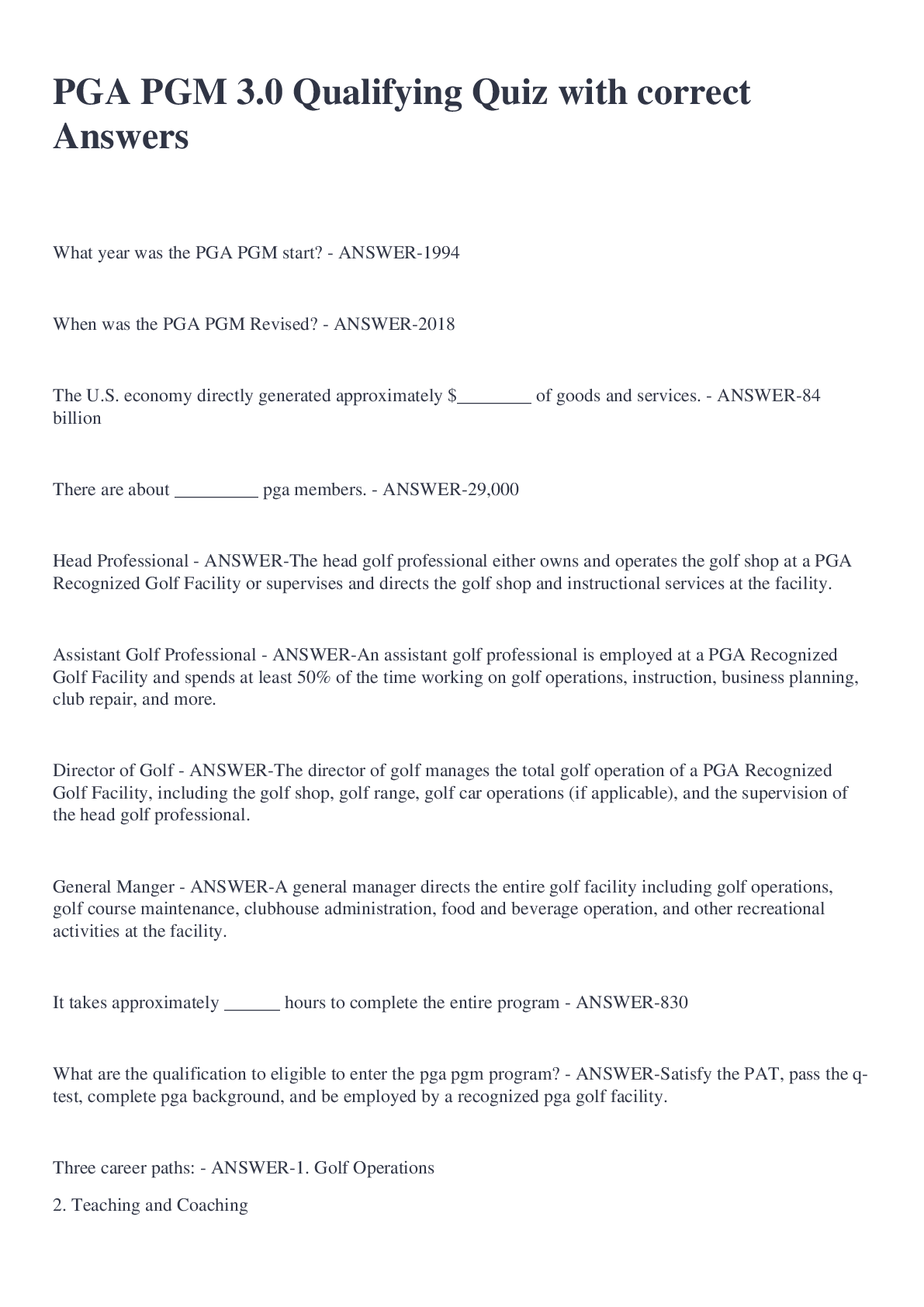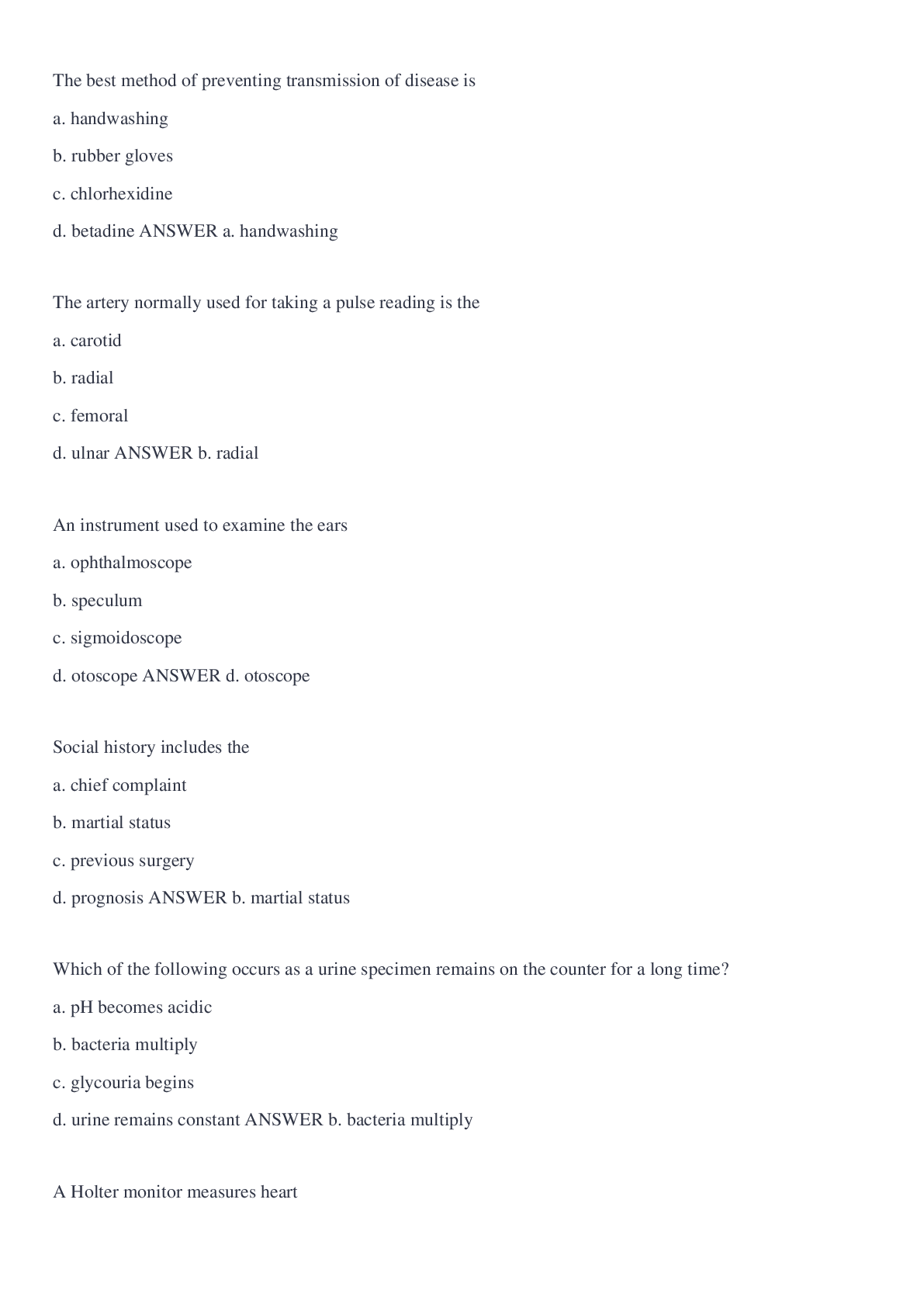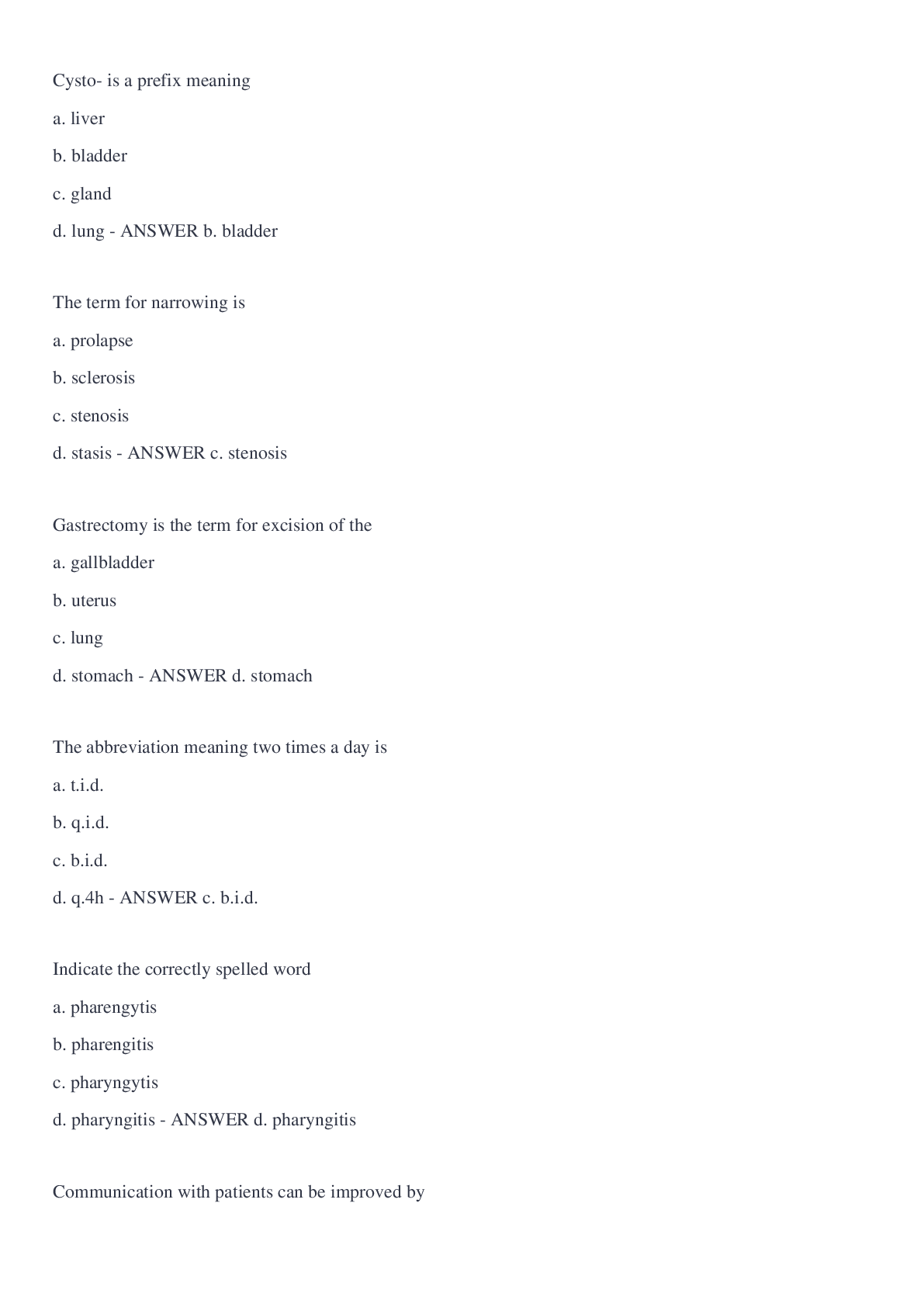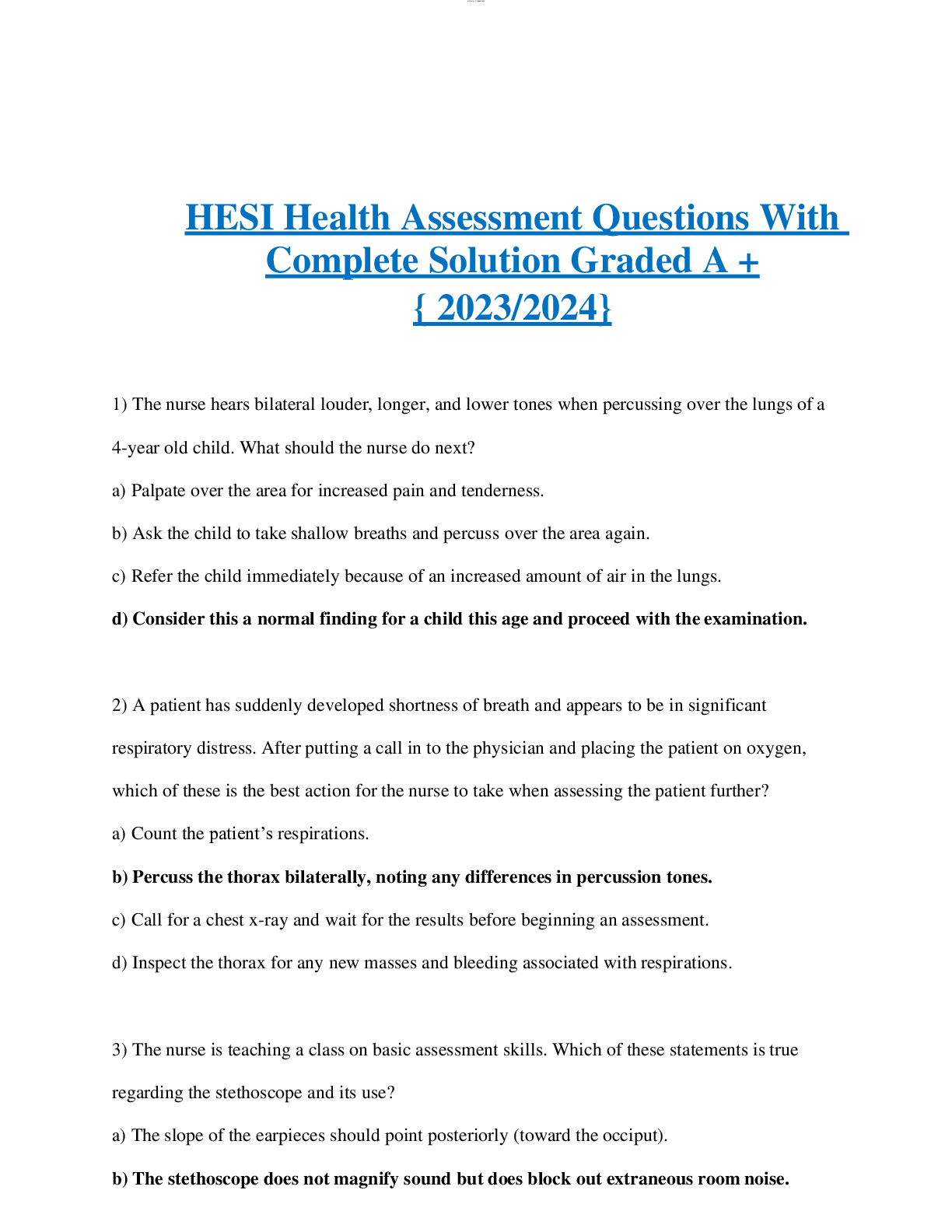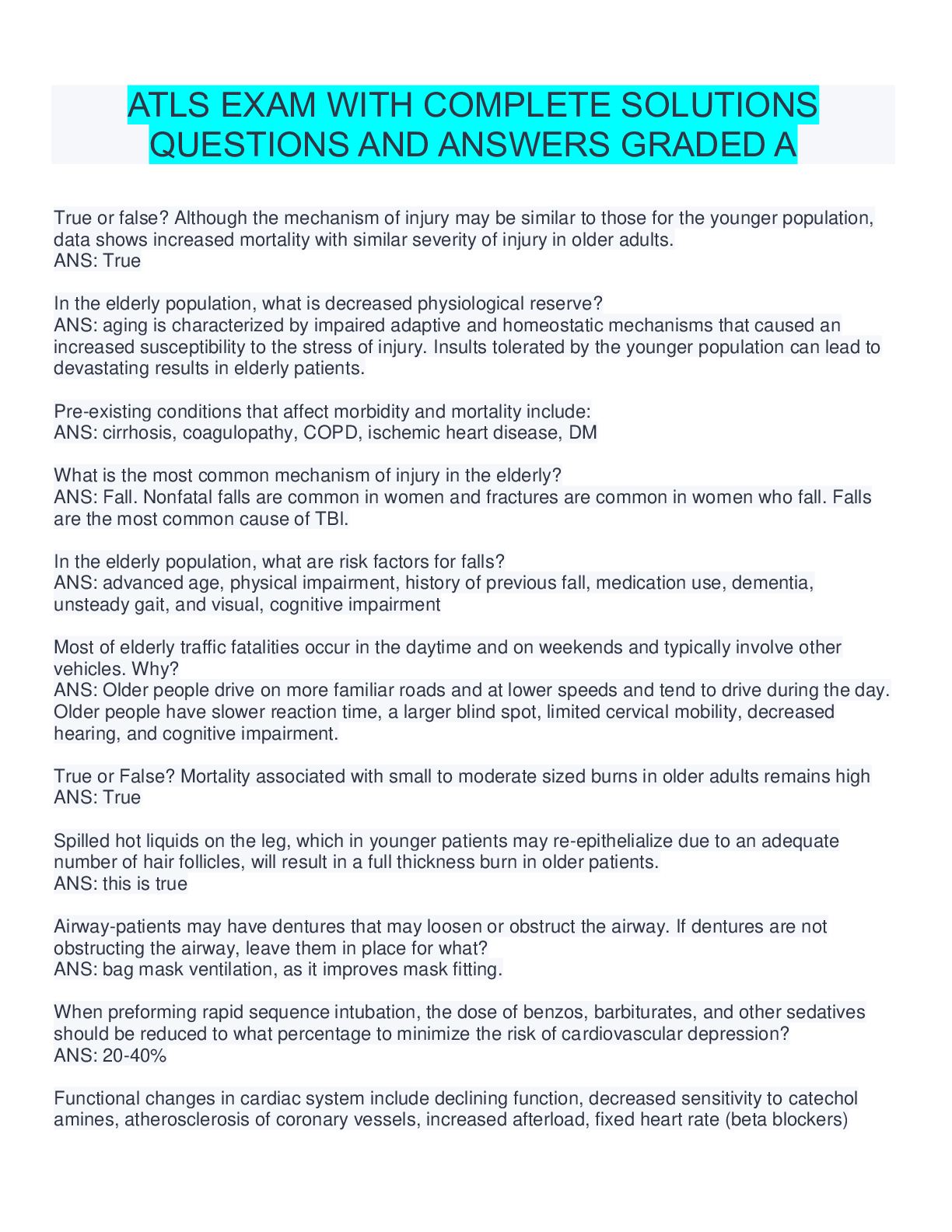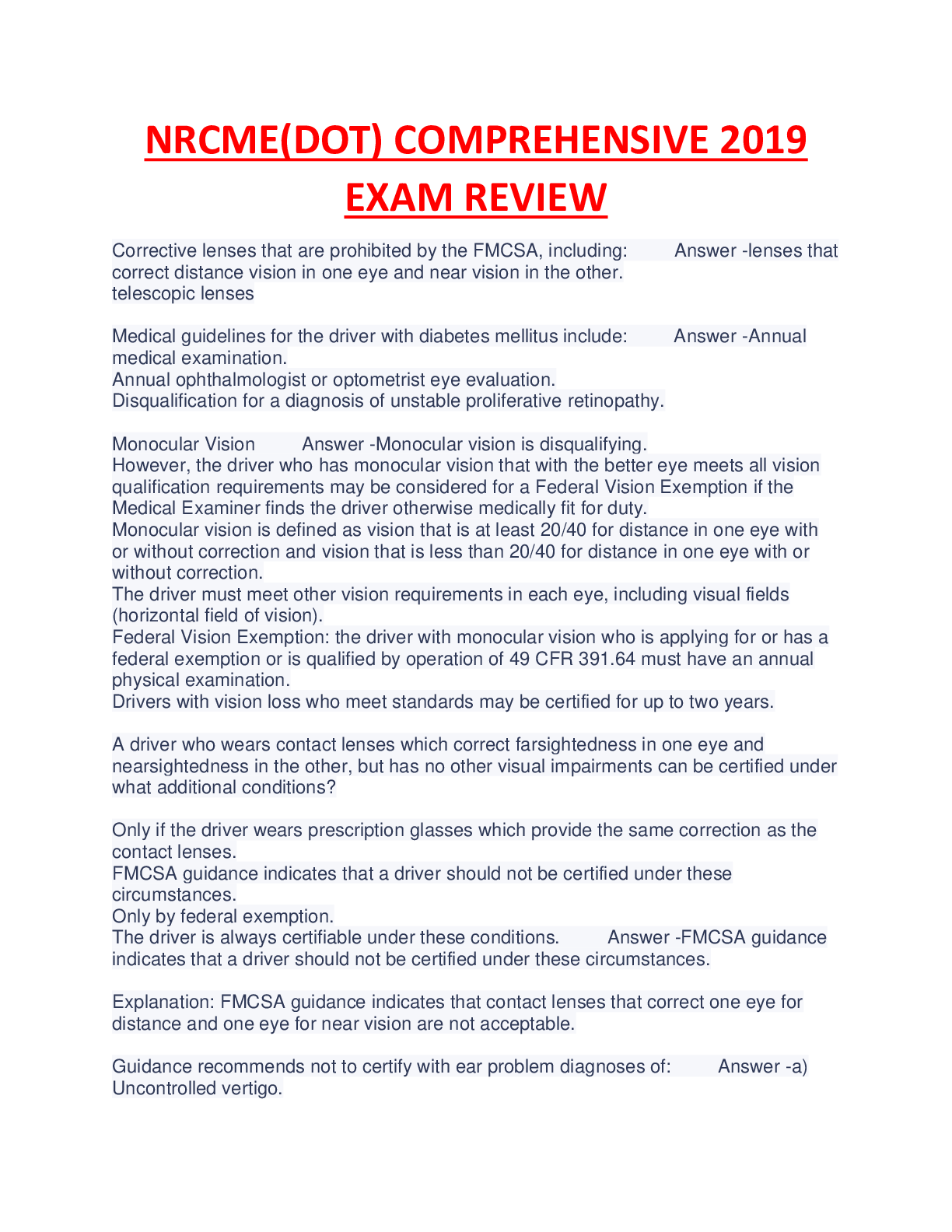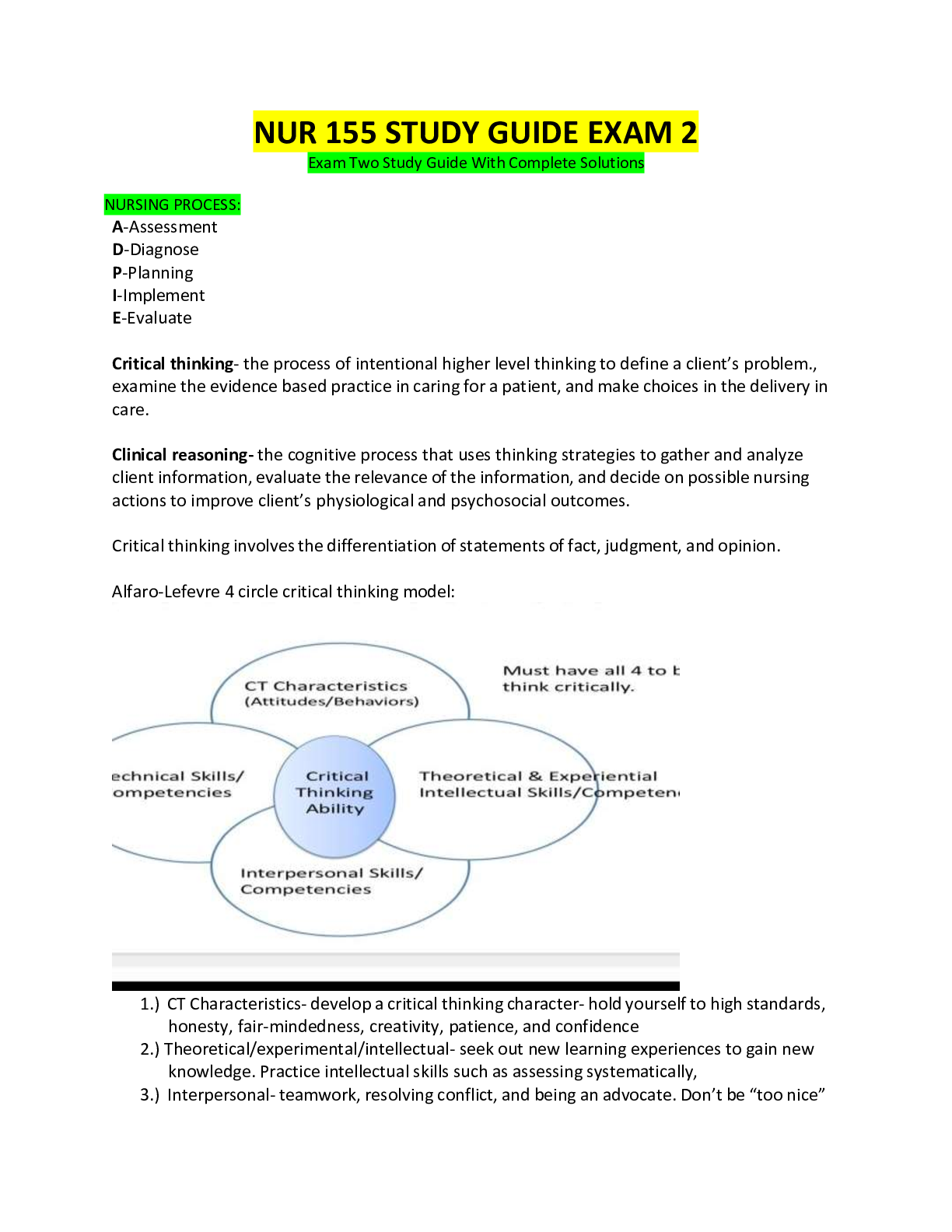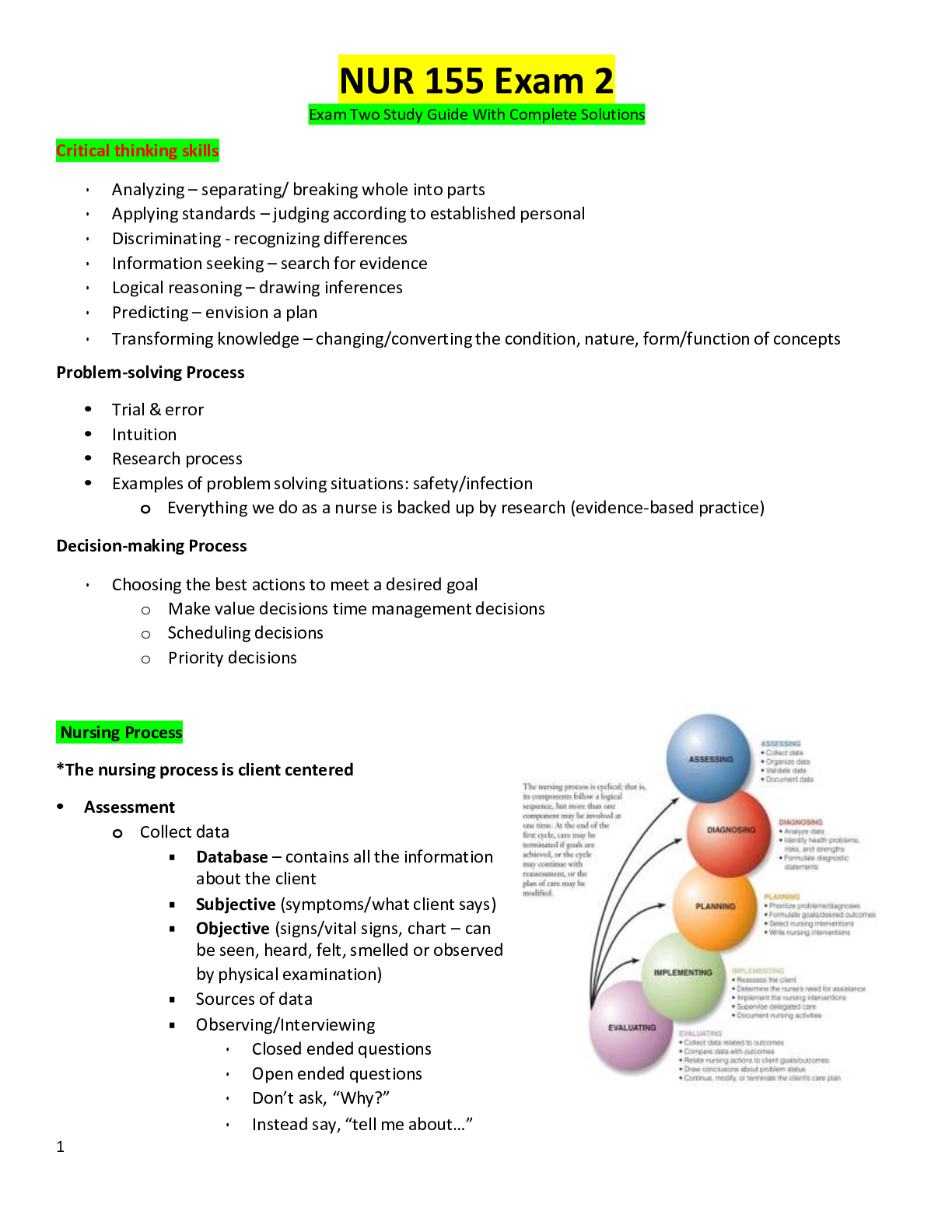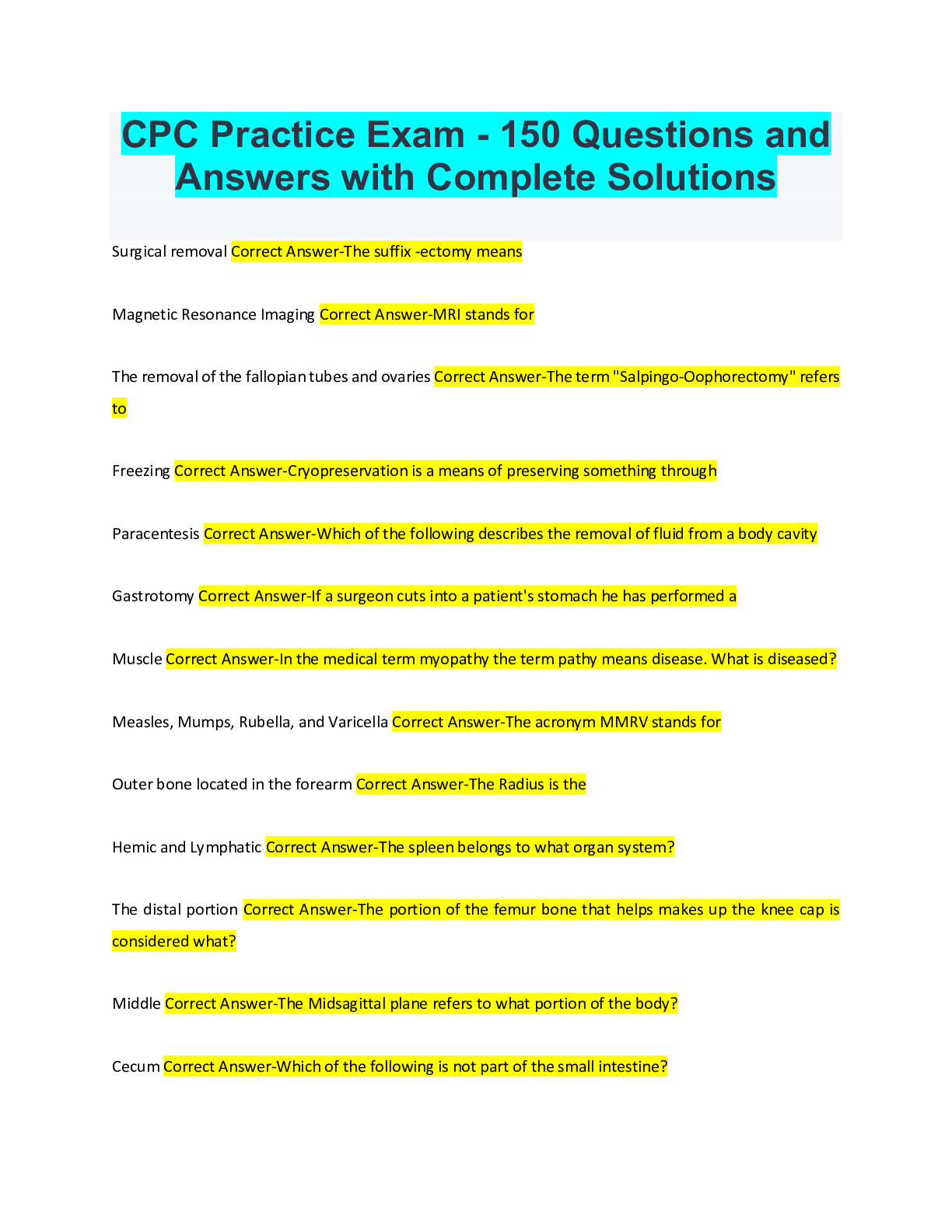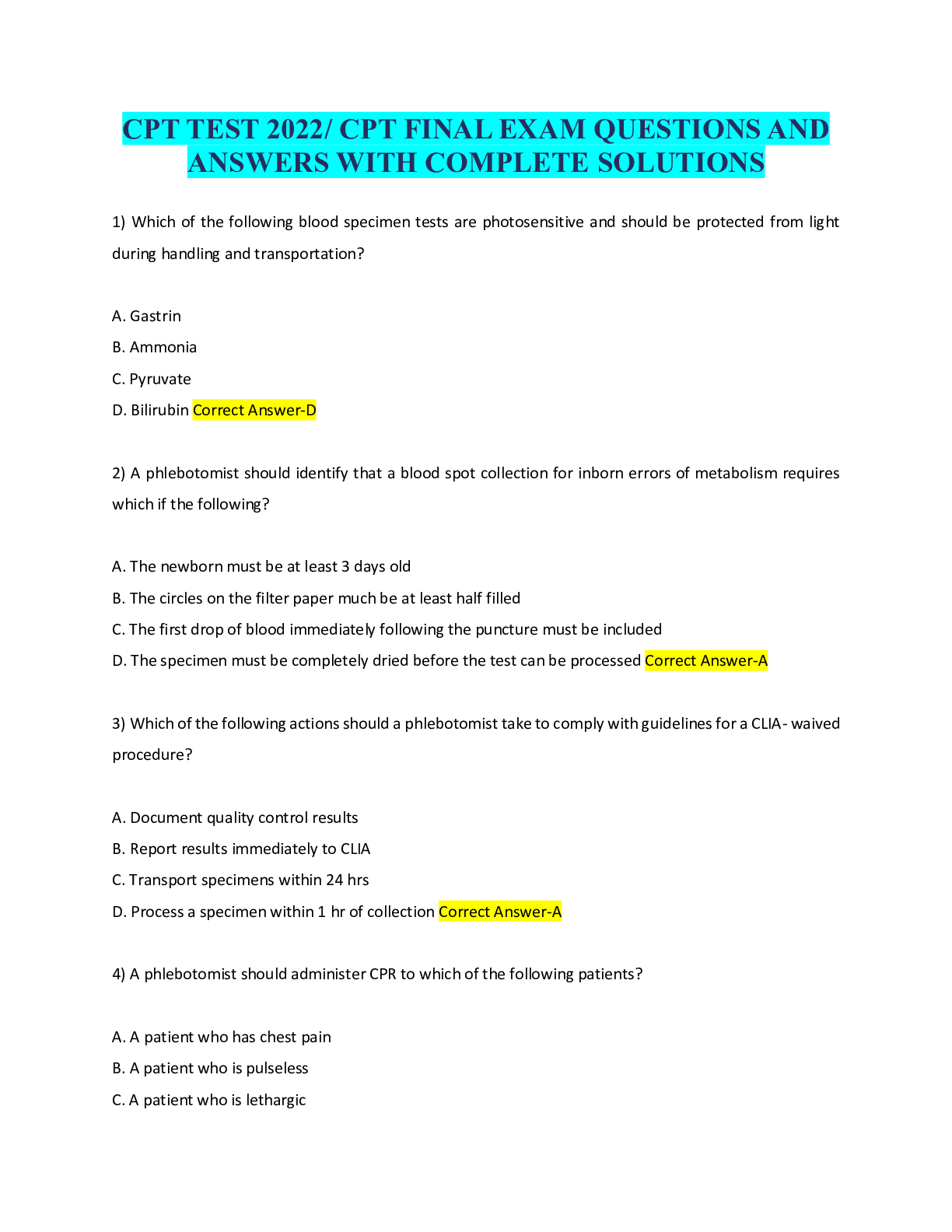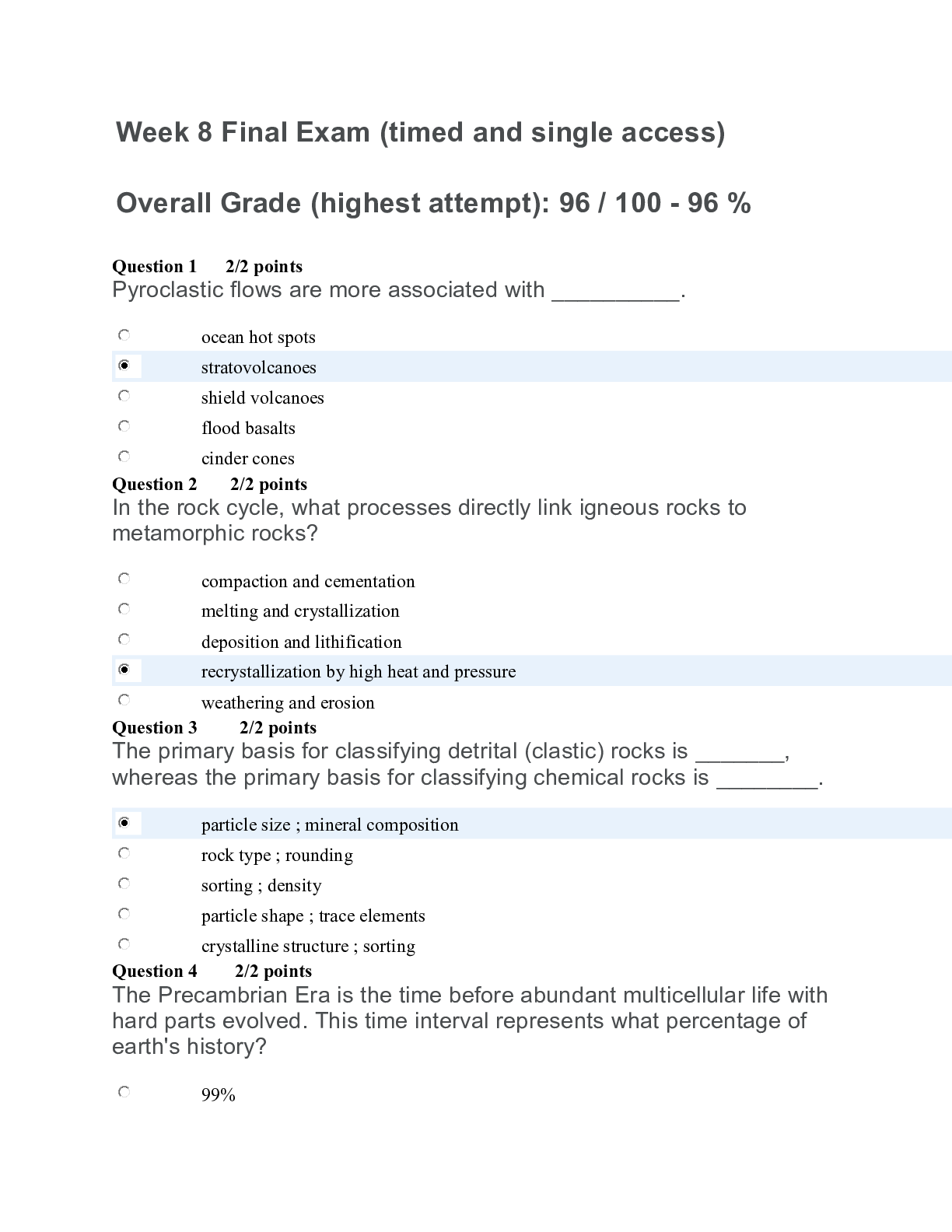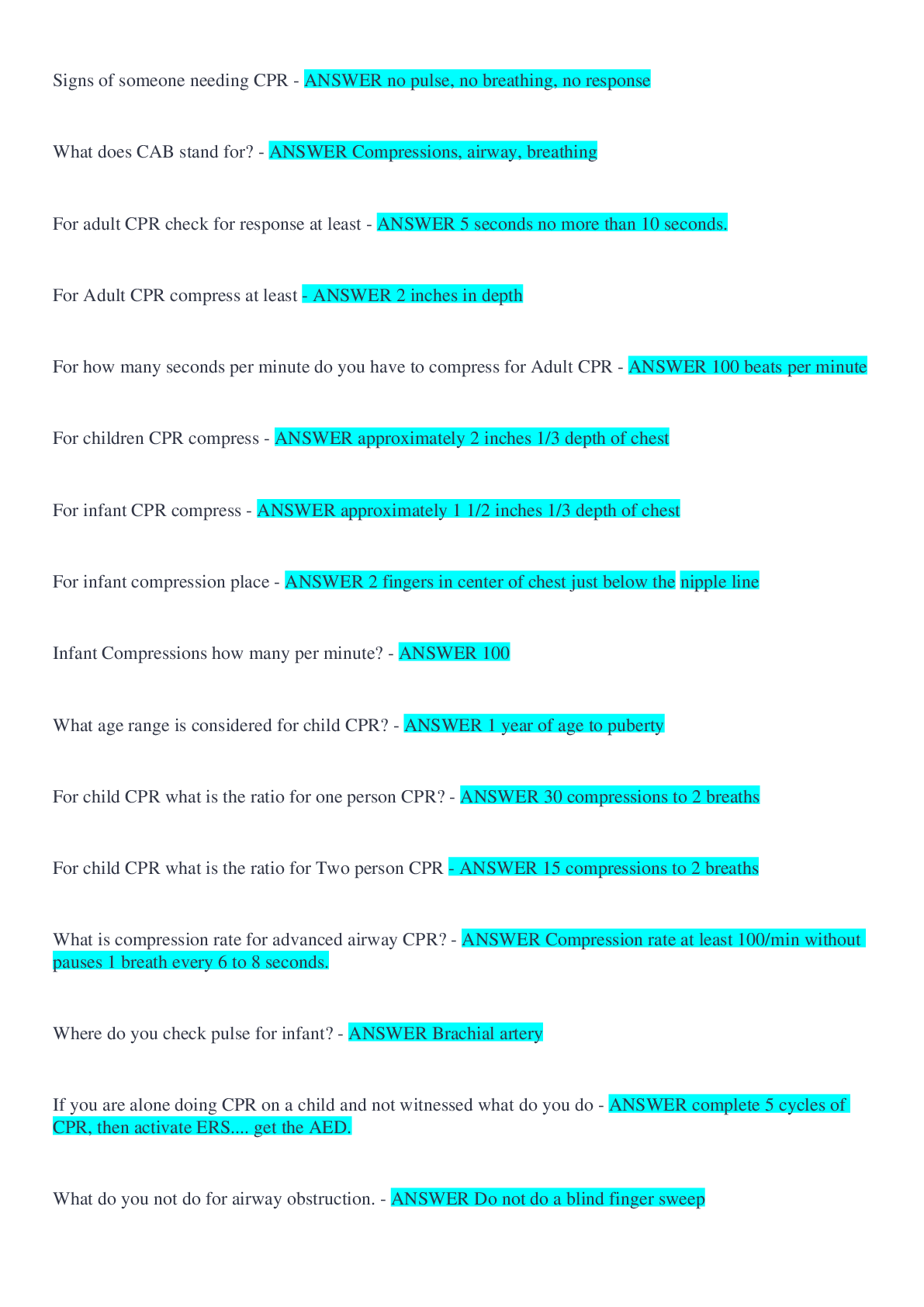Health Care > EXAM > Prophecy Exam 1 - PACU (Nursing 2) 2022 with complete solutions (All)
Prophecy Exam 1 - PACU (Nursing 2) 2022 with complete solutions
Document Content and Description Below
PACU stands for: - ANSWER post-anesthesia care unit The primary purpose of the PACU is: - ANSWER ongoing critical evaluation and stabilization of pt. Upon admission, the pt must be: - ANSWER pla... ced on/with EKG, pulse ox, BP cuff, and oxygen When a pt arrives in PACU, the ___ gives report. - ANSWER CRNA/Anesth. Phase 1: - ANSWER Intense monitoring, preparing pt for d/c or inpatient unit Phase 2: - ANSWER Preparing pt for Phase III, home, or rehab facility Phase 3: - ANSWER Preparing pt for self care, observation, rehab Fast tracking: - ANSWER Pt admitted to PACU after local or regional anesthesia Intraoperative management while giving admission report: - ANSWER what anesthesia was used, meds given, EBL, fluid replacement totals, urine output Intraoperative course while giving admission report: - ANSWER unexpected anesthetic events/reactions, VS, monitoring trends, lab results PACU assessment priority: - ANSWER Adequacy of airway (rate, rhythm, accessory muscles, breath sounds, O2 sat) Pts at higher risk in PACU: - ANSWER those that received general, elderly, smokers/lung disease, obese, pts that went under thoracic/airway/abd surgery Obese pts are at a higher risk in PACU due to: - ANSWER adipose tissue absorbing anesthesia and slowly releasing over time, they're harder to wake Reasons for airway obstruction: - ANSWER blockage (usually tongue), supine position, extremely sleepiness, laryngospasm (throat close), retained secretions, laryngeal edema (from neck surgery) The most common cause of postop hypoxemia: - ANSWER atelectasis Atelectasis: - ANSWER complete or partial lung collapse, may result from retained secretions Assessing cardio status: - ANSWER EKG monitoring, VS q15m, peripheral vascular assessment Assessing neurology: - ANSWER LOC, orientation, sensory/motor status, pupil equality/size The main info that's helpful in assessing a patient is knowing their: - ANSWER baseline vitals/labs A pt in PACU should be voiding at least: - ANSWER 30 mL/hr When a pt is waking, their first sense to return is: - ANSWER hearing You should orient the pt waking up by: - ANSWER explaining the surgery is over, location of pt, family/friend is notified, RN's name Discharge criteria: - ANSWER awake, VS stable, no excessive bleeding/draining, no resp depression, pulse ox < 90%, report given S/S of pulmonary embolism: - ANSWER SOA, rapid pulse, cold sweat, anxious, sudden panic Homan's sign: - ANSWER when a pt flexes their feet and it causes deep pain in their leg DVT's are a huge risk because: - ANSWER the clot can travel to the lungs, heart, or brain Notify HCP if pt experiences: - ANSWER Systolic <90 or >160, pulse <90 or >120, BP gradually increases, irregular cardiac rhythm Urinary complications: - ANSWER Retention, infection, altered drug excretion S/S paralytic ileus: - ANSWER abd cramping that comes and goes, loss of appetite, constipation, vomiting, inability to pass gas or feces, abd distention Postop GI complications: - ANSWER NV, abd distention, constipation Dehiscence: - ANSWER Surgical wound separation within 1 week postop Evisceration: - ANSWER Protrusion of tissue through dehiscence Cause of dehiscence: - ANSWER obese, poor skin integrity Effective ___ will promote effective healing. - ANSWER pain management Benefits of early ambulation: - ANSWER increases muscle tone, improves GI/urinary tract fx, stimulates circulation, assist in respiratory fx When a pt is admitted to the PACU, what are the priority interventions the RN performs? A. assess surgical site, noting presence and character of drainage B. assess the amount of urine output and the presence of the bladder distention C. assess for airway patency and quality of respirations, and obtain VS D. review results of intraoperative lab values and medications received - ANSWER Airway After admission to the PACU, which assessment requires the most immediate attention? A. O2 85% B. Resp rate 13/min C. Temp 100.4 F D. BP 90/60 - ANSWER O2 A 70 kg postop pt has an average urine output of 25 mL/hr during the first 8 hrs. The priority should be: A. perform a straight cath to measure the amount of urine in bladder B. notify the HCP and anticipate blood work to eval renal fx C. continue to monitor the pt because this is a normal finding in this period D. eval the pt's fluid volume status since surgery and obtain a bladder u/s - ANSWER Eval the fluid volume and bladder u/s D/c criteria for the Phase II pt includes (select all that apply): A. no N/V B. ability to drive self home C. no resp depression D. written d/c instructions understood E. opioid med given 45 min ago - ANSWER no resp depression, written d/c understood, opioid med given [Show More]
Last updated: 1 year ago
Preview 1 out of 4 pages
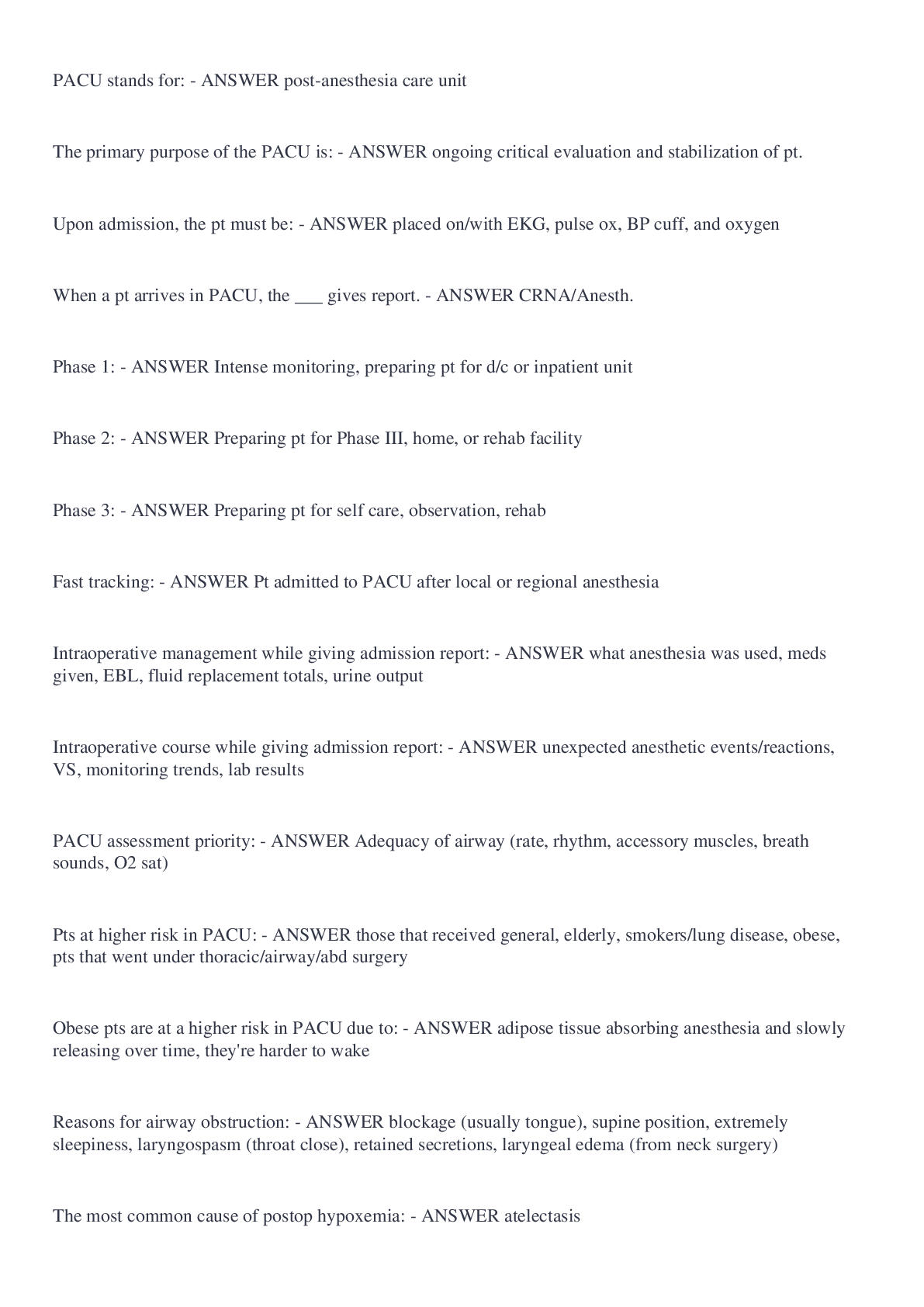
Reviews( 0 )
Document information
Connected school, study & course
About the document
Uploaded On
Jul 20, 2022
Number of pages
4
Written in
Additional information
This document has been written for:
Uploaded
Jul 20, 2022
Downloads
0
Views
39

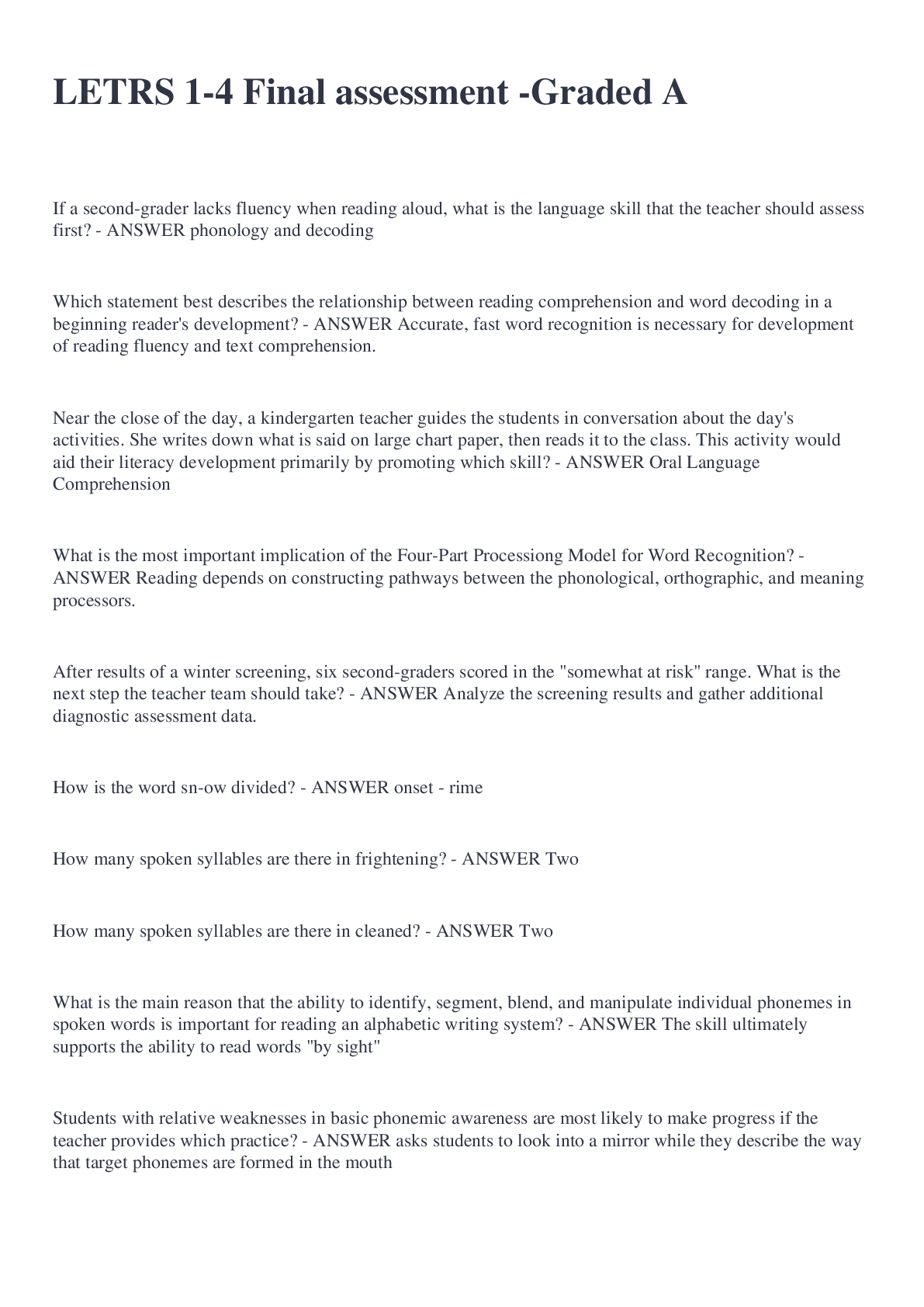


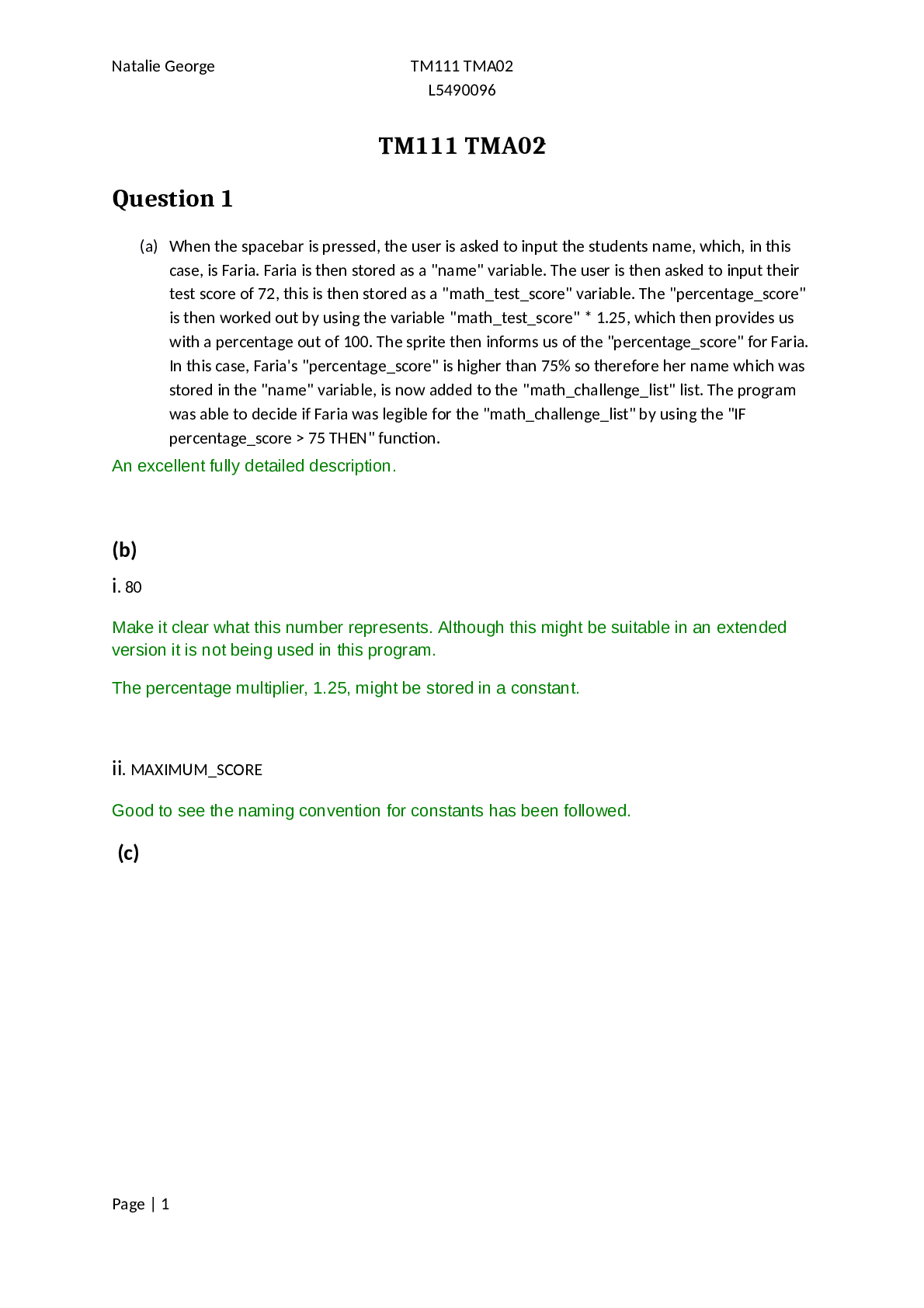


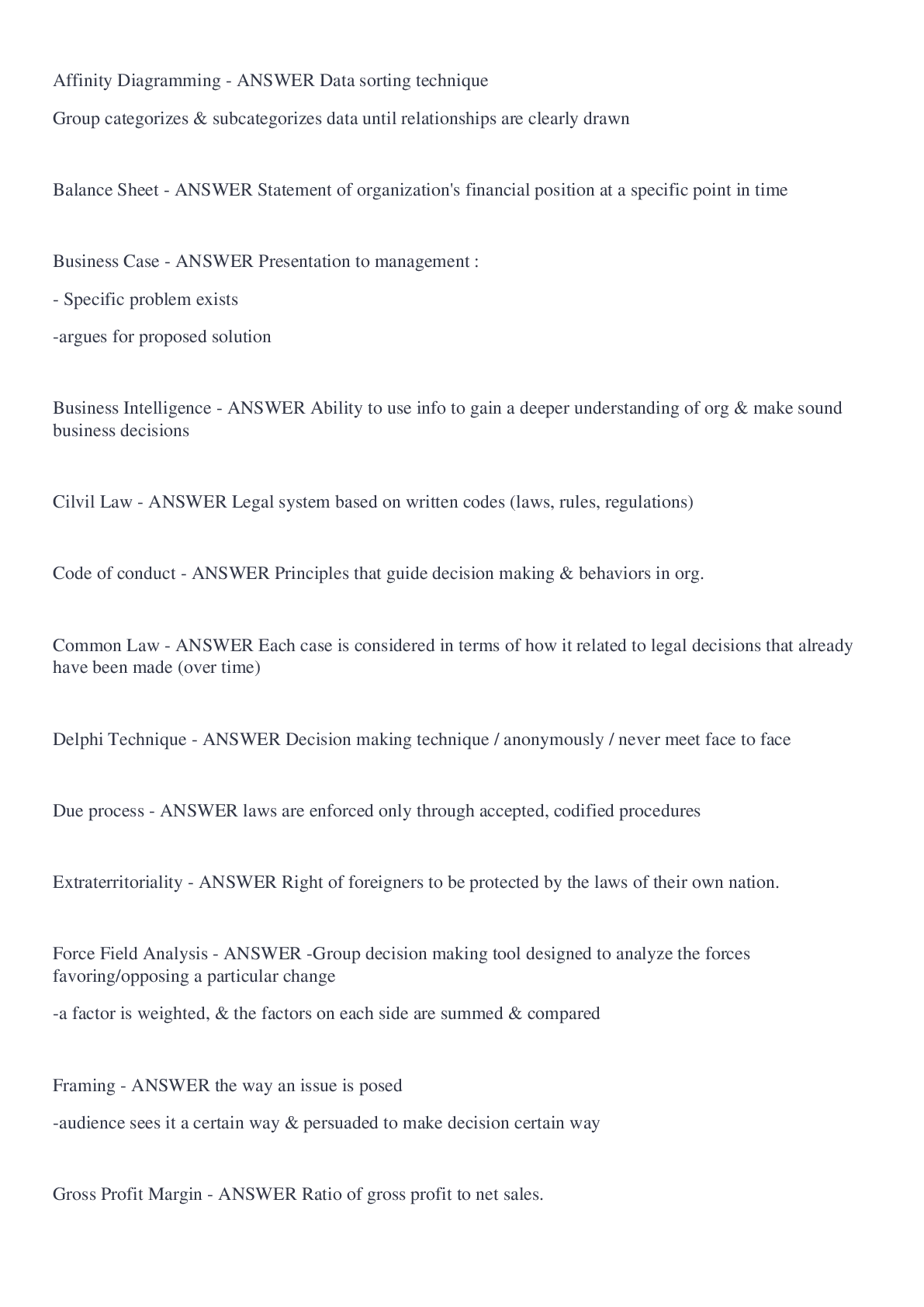

.png)
